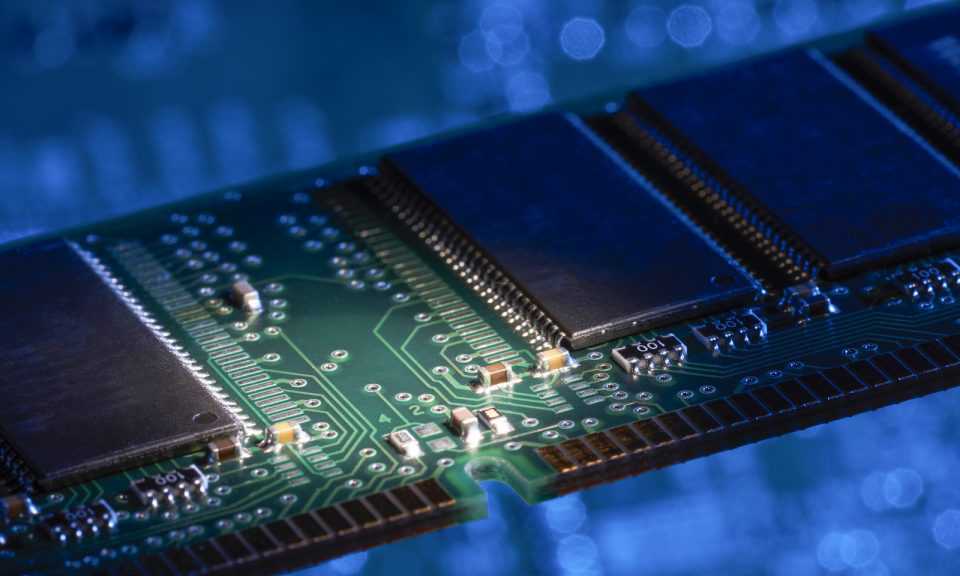Samsung aims for robust chip investment despite fall in prices
22 January, 2019

Although Samsung Electronics will take a cautious approach to capital expenditure this year amid falling chip prices, the confidence of the colossus is solid, due to its manufacturing edge and a market upturn forecast for the second half of 2019.
Samsung, the world’s largest maker of dynamic-random-access-memory (DRAM) chips, intends to take a cautious and flexible approach to investment in DRAM and NAND flash chip facilities due to falling memory chip prices, but still looks well-placed to fend off Chinese challenges.
The industry-leading firm’s confidence remains robust as seen in a recent comment by Lee Jae-yong, the vice chairman and de facto heir of Samsung. “The market is not favorable, but it’s time to show real strength,” he told South Korean President Moon Jae-in last week in a widely-reported remark.
Gloomy forecasts
Lee was speaking in response to Moon’s comments about gloomy forecasts hanging over the memory-chip market during a meeting Moon held with the chiefs of the chaebol, the family-run business groups that dominate the South Korean economy.
A source familiar with Samsung’s investment plans interpreted Lee’s remarks for Asia Times. “Samsung will cautiously and flexibly invest in memory-chip facilities due to the shrinking demand,” he said. “Samsung did not expect the price to fall in such a drastic pace.”
Samsung Electronics announced that its operating profit plunged to 10.8 trillion won ($9.66 billion) – a $28.70 drop over the same period of previous year. That fall was primarily due to the fall in DRAM prices
Chip-makers do not customarily reveal their capital expenditure plans. But specialist media DRAMeXchange estimated manufacturers’ capital expenditure for DRAM production would decrease by 10% to $18 billion this year. Samsung will invest $8 billion, while SK Hynix, South Korea’s second major memory-chip maker, will invest $5.5 billion this year. US player Micron Technology will spend $3 billion.
DRAMeXchange considered these investment plans the most conservative in recent years.
Amid widespread expectations that Samsung will cut memory-chip facilities investments, Lee’s remark has been jumped upon. However, the source said that Lee’s remark should not be over-emphasized. “Lee might have been expressing confidence in Samsung’s competitiveness, or its expectation that the slump in the DRAM market will not last long,” he suggested.
‘Reducing cost’
Some believe that Samsung Electronics is determined to put competitors under pressure. In the past, Samsung has waged price wars when demand is sluggish by conducting aggressive investment.
However the source said: “A ‘chicken game’ is not likely to take place as Samsung is under threat of sanctions due to alleged violation of anti-trust laws by the Chinese government.”
That may not matter: Samsung Electronics has enough muscle to withstand slowdowns. It can generate profits even if NAND prices drop to levels which their competitors cannot stand, especially in the NAND flash sector which is more crowded than the DRAM market and which Chinese newcomers are reported to enter later this year.
Samsung and Hynix are expected to focus on mass-producing Quad Level Cell (QC) process-based solid-state-drives (SSDs) made from NAND flash chips. Through investments in this process, they can reduce production costs while maintaining their technological edge.
“Investment in the QC process does not seem intended to shake off the pursuit by their followers, it’s an action to reduce costs,” said Subin Lee, a semiconductor analyst at Daishin Securities in Seoul. “But, once they complete the investment, it is true that the technology gap between leading companies and followers will have widened.”
Meanwhile, Chinese memory-chip maker Yangtze Memory Technology is reported to be starting 32-layer 3D NAND flash production this year. Although this technology lags behind Samsung’s, it is seen as a possible threat, given Chinese firms’ customary price-slashing strategies.
But some are skeptical about the move. Lee Seung Woo, an analyst with Eugene Investment said: “We don’t know when [Yangtze] will kick off production. All we see are just media reports.”
Chip rebound forecast
Despite current clouds hovering over the sector, experts do not see the recent drop in prices lasting long. Some expect DRAM prices to pick up in the second half.
IT research firm Gartner estimated in a recent report that global semiconductor market sales would total $489 billion in 2019, up 2.6% from 2018.
And although it is going to slow down from the impressive 21.6% and 13.4% expansions in 2017 and 2018, respectively, the market continues to grow.
Gartner said that 2020’s semiconductor sales figures are expected to be $528 million, up 8% from this year.
A South Korean finance ministry official with knowledge of the sector told Asia Times: “Experts forecast a recovery of the DRAM market in the second half due to demands from such sectors as cyber-physical systems, the Internet of Things and artificial intelligence.”
TAG(s):
